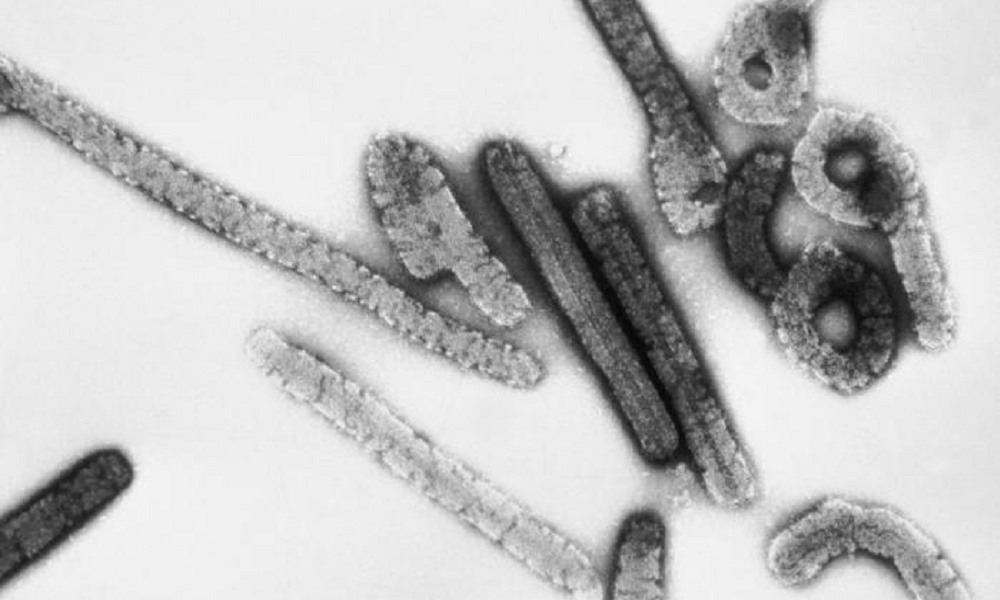World
Chinese woman suffered from H5N1 bird flu and COVID-19 at the same time

A 52-year-old woman in eastern China who tested positive for H5N1 bird flu earlier this year was also suffering from COVID-19, according to a new report, making it the first known case of co-infection with both viruses.
The woman, from a rural area in Anhui province, was exposed to sick poultry and developed a fever on February 1. She was initially given antibacterial treatment but was transferred to a hospital in Jiangsu province when her symptoms got worse.
At admission, the woman had a temperature of 39°C (102.2°F), worsening shortness of breath, decreased blood pressure, air bronchogram and lung consolidation, according to a team of researchers at the First Affiliated Hospital of Nanjing Medical University.
As a result, the patient was placed on a non-invasive ventilator for management of severe acute respiratory distress syndrome. Initial tests were all negative for COVID-19, bacterial pathogens, fungal infections, tuberculosis and common respiratory pathogens.
“On the night of 7 February 2023, the patient appeared irritable and was transferred to the intensive care unit,” the researchers wrote in a preprint. “Upon admission to the ICU, the patient was placed on intratracheal intubation and mechanical ventilation.”
Three days after admission to the ICU, more advanced testing revealed that the woman was suffering from both H5N1 avian influenza and SARS-CoV-2, the virus which causes COVID-19.
“After treatment with the antivirals, the inflammation indices and temperature of the patient improved,” the researchers said. “Thirteen days after admission to the ICU, the pulmonary inflammation had subsided … Therefore, mechanical ventilation was withheld and the corticosteroid was discontinued.”
In early March, twenty-seven days after admission to the ICU, the woman tested negative for both H5N1 and COVID-19, after which she was released from the hospital.
“In the present case, no other member in the patient’s family was infected with H5N1, except for the patient who was exposed to sick poultry, which demonstrated that the spread of this virus is limited to animal-to-human transmission,” the researchers said.
The global spread of H5N1 clade 2.3.4.4b – and the recent spread to a growing number of mammals – has raised concern about the possibility of a future variant which could lead to human-to-human transmission. So far, only a few human cases have been reported after contact with infected birds.
“The global H5N1 situation is worrying given the wide spread of the virus in birds around the world and the increasing reports of cases in mammals, including in humans,” Dr. Sylvie Briand, a WHO official, said on February 24. “WHO takes the risk from this virus seriously and urges heightened vigilance from all countries.”

-

 World1 week ago
World1 week agoEthiopian volcano erupts for first time in thousands of years
-

 Legal6 days ago
Legal6 days agoUtah Amber Alert: Jessika Francisco abducted by sex offender in Ogden
-

 US News5 days ago
US News5 days agoExplosion destroys home in Oakland, Maine; at least 1 injured
-

 Health20 hours ago
Health20 hours ago8 kittens die of H5N1 bird flu in the Netherlands
-

 Health6 days ago
Health6 days agoMexico’s September human bird flu case confirmed as H5N2
-

 Legal2 days ago
Legal2 days ago15 people shot, 4 killed, at birthday party in Stockton, California
-

 World6 days ago
World6 days agoWoman killed, man seriously injured in shark attack on Australia’s NSW coast
-

 Health5 days ago
Health5 days agoMarburg outbreak in Ethiopia rises to 12 cases and 8 deaths




